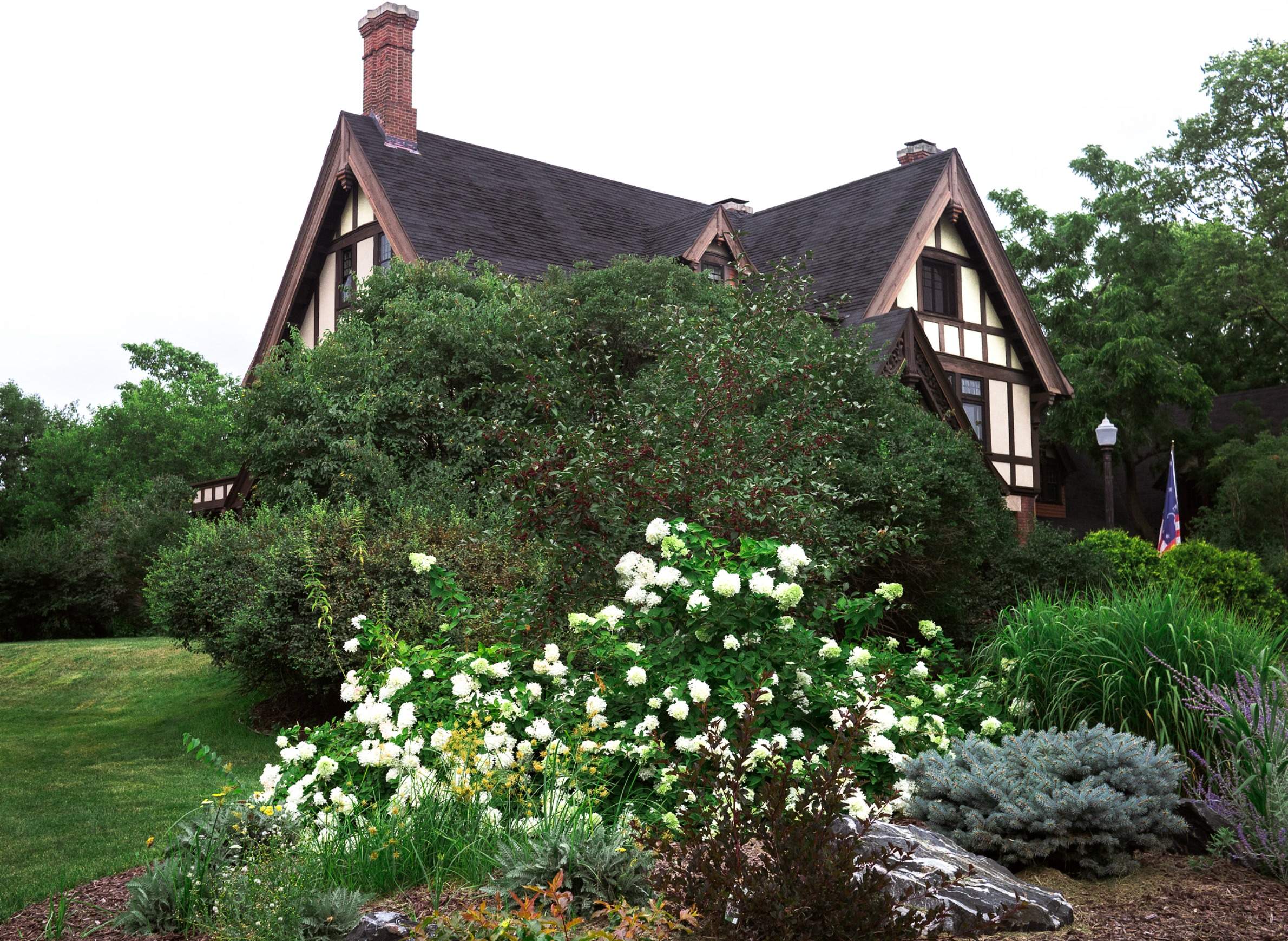
Home Energy Conservation Benefits From Nearby Trees And Shrubs

Energy conservation starts at home. With a few modifications to existing landscape design, an average backyard can become an energy conservation tool.
Properly positioned trees and shrubs can save up to 25 percent of a household's energy consumption for heating and cooling, reduce the surface temperature of driveways and sidewalks during the summer, minimize mowing and watering on lawns, and reduce noise and indoor dust pollution.
Landscape areas that are candidates for energy conservation improvements should be examined before work begins to change them. The following design tips can help build a landscape with focus on energy conservation.
For winter wind protection
Evergreen trees like arborvitae, white pine, Austrian pine, Norway spruce, and eastern red cedar provide excellent windbreaks and help minimize winter heat loss in homes. A well-placed windbreak along the windward side of a house can reduce heat consumption to 25 percent compared to unprotected houses. Windbreak trees can be effective to a distance of 10 times their height. For example, a 10-foot tall evergreen tree can be effective for 100 feet.
Many large yards can accommodate evergreen trees planted in two or three staggered rows to the north and northwest sides of the house. The planting distance of these evergreen trees from the house should be at least two to five times the height of the mature tree, ideally 100 to 150 feet.
Planting shorter shrubs like American cranberry, redosier dogwood, black chokeberry, ninebark or American hazelnut along the windward sides of windbreaks will minimize the snow drifts against the sides of homes and buildings; these shorter shrubs will trap blowing snow before it reaches exterior walls.
Dwarf conifers and shrubs planted along the foundation of a house can further provide insulation during winter and summer, but they should be planted at least 12 inches away from the foundation to prevent promoting damp conditions. Evergreen plants should not be placed to shade south-facing windows.
For summer shade
Shade trees, shrubs and vines play a vital role in modifying sunlight, air temperature and relative humidity. They create a pleasant micro-environment and potentially reduce air-conditioning use by 2 to 8 percent annually.
Large deciduous trees with high spreading crowns, such as Kentucky coffee trees, oaks and London planetrees, are excellent shade providers. They are best planted on the south side of a roof to provide shade throughout the day. They should be placed at least 30 feet away from the house's foundation.
To provide shade from the late afternoon sun, small to medium size trees like serviceberry, muscle wood, disease resistant crab apples, or large shrubs like Cornelian cherry dogwood can be planted on the west side of the home
Open sidewalks, driveways and other pavement absorb significant heat energy during daytime and radiate them back to walls and windows, increasing energy costs during summer. Planting large shrubs next to the driveways or maintaining a hedgerow can shade paved surfaces and help keep air cooler. Some common landscape species that can be used as a hedge are alpine currant, arrowwood viburnum, privet, upright juniper, arborvitae, ninebark and dogwood.
Vijai Pandian is a horticultural agent and educator for the University of Wisconsin-Extension Brown County. This article is adapted from an item originally published by the Green Bay Press Gazette.


